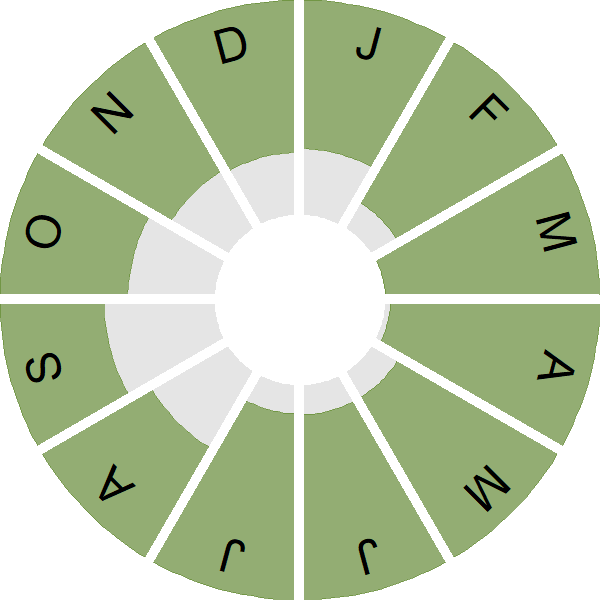Greenfinch
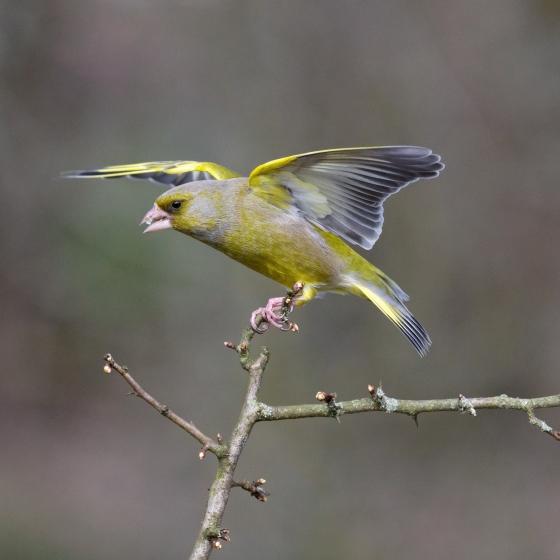
Introduction
This stocky finch can be found throughout in Britain & Ireland at all times of the year, except on the highest peaks.
The Greenfinch has a twittering song, which features a distinct drawn-out wheeze. It is a bold species and can enter into squabbles with other birds at garden feeders. It is also found in open woodland and farmland. Males have distinctive green plumage, with yellow in the wing and tail. Females and juveniles are duller.
The Greenfinch has undergone a major population decline in the UK since the mid-2000s, due to the disease Trichomonosis. It was added to the UK Red List in 2021. In the winter, Greenfinch numbers are supplemented by birds migrating from Fennoscandia.
- Our Trends Explorer gives you the latest insight into how this species' population is changing.

Key Stats
Identification
ID Videos
This section features BTO training videos headlining this species, or featuring it as a potential confusion species.
Green finches in your garden
GBW: Goldfinch and Greenfinch
#BirdSongBasics: Greenfinch and Goldfinch
Songs and Calls
Song:
Call:
Begging call:
Status and Trends
Conservation Status
Population Change
Greenfinch abundance fluctuated somewhat up to the mid 1990s, but there was little change in either survival or breeding performance during this period (Siriwardena et al. 1998b, 2000b). More recent CBC/BBS data indicate population increases widely across the UK, followed by a sudden sharp fall induced by a widespread and severe outbreak of trichomonosis disease. Although Greenfinch is currently still green listed in the UK, based on the trend at the time of the last review (Eaton et al. 2015), the current decline would raise red listing and caused it to be rated as 'Endangered' in a recent assessment of UK species which followed IUCN criteria and categories (Stanbury et al. 2017).
The BBS map of change in relative density between 1994-96 and 2007-09 indicates that increases over that period, strongest in East Anglia and in western Britain, contrasted with decreases in eastern Northern Ireland, northeastern Scotland and central southern England. The subsequent, disease-related decrease is ongoing in all parts of the UK. Numbers across Europe have been broadly stable since 1980, with early increases being followed by a decline starting in the 1990s (PECBMS: PECBMS 2020a>).
Distribution
Greenfinches are widely distributed in winter and the breeding season, perhaps showing especially strong associations with villages and towns across Britain & Ireland. Like the Goldfinch, its only significant range gaps are in the higher parts of northern Scotland. Highest densities are found on lower ground, mainly in south and southeast England, eastern Scotland and in pockets throughout Ireland.
Occupied 10-km squares in UK
2007/08–10/11
or view it on Bird Atlas Mapstore.
2008–11
or view it on Bird Atlas Mapstore.
European Distribution Map
Distribution Change
Since the 1981–84 Winter Atlas the range has increased by 18%, involving infilling in western Ireland and parts of Wales and northern England, and a more continuous expansion around the coastal-upland fringe in northwest Scotland.
Change in occupied 10-km squares in the UK
from 1981–84 to 2007–11
or view it on Bird Atlas Mapstore.
from 1968–72 to 2008–11
or view it on Bird Atlas Mapstore.
Seasonality
Greenfinch is recorded throughout the year on up to 30% of complete lists.
Weekly pattern of occurrence
The graph shows when the species is present in the UK, with taller bars indicating a higher likelihood of encountering the species in appropriate regions and habitats.

Habitats
Breeding season habitats
Relative frequency by habitat
The graph shows the habitats occupied in the breeding season, with the most utilised habitats shown at the top. Bars of similar size indicate the species is equally likely to be recorded in those habitats.
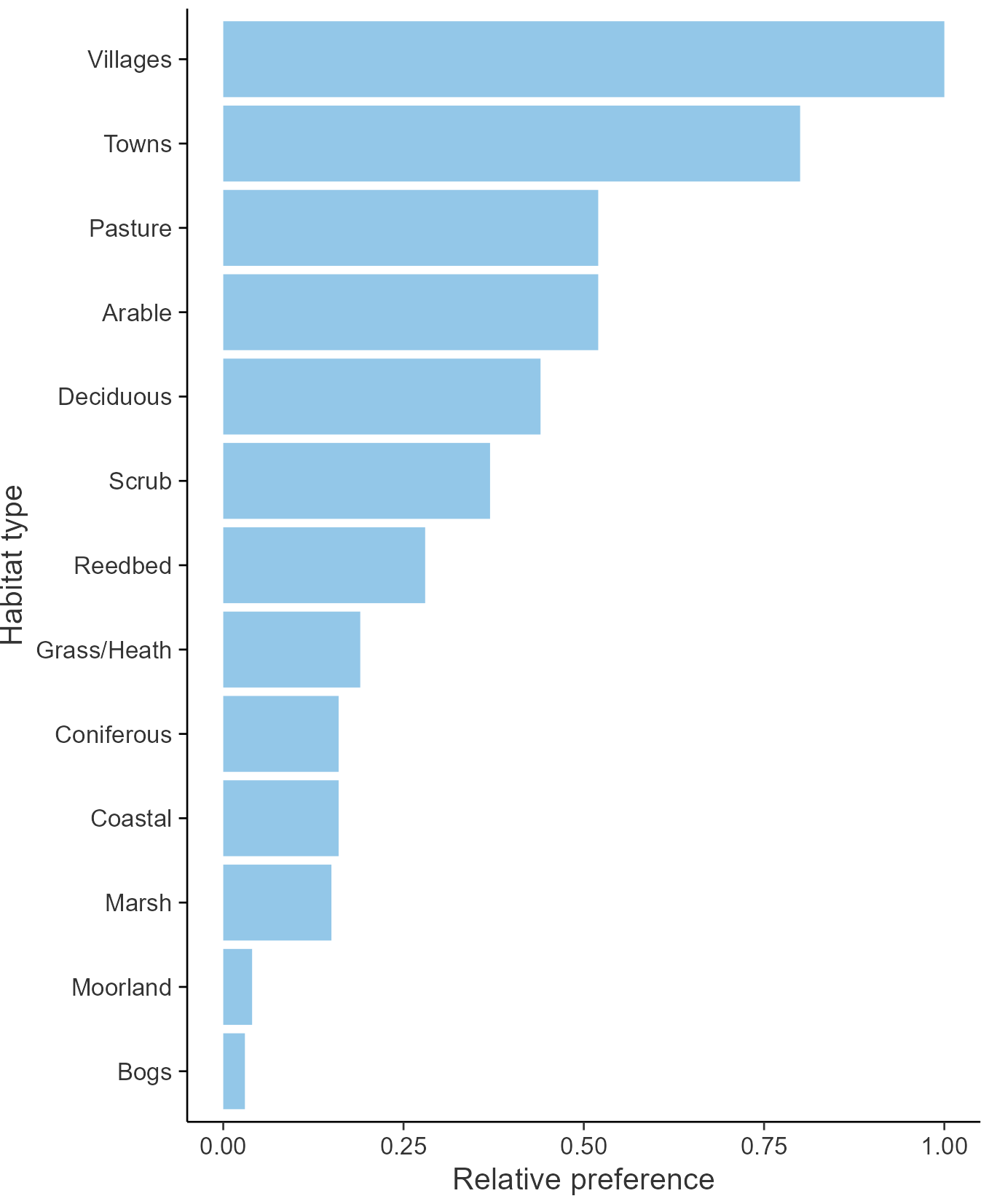
Movement
Britain & Ireland movement
Foreign locations of birds ringed or recovered in Britain & Ireland
Dots show the foreign destinations of birds ringed in Britain & Ireland, and the origins of birds ringed overseas that were subsequently recaptured, resighted or found dead in Britain & Ireland. Dot colours indicate the time of year that the species was present at the location.
- Winter (Nov-Feb)
- Spring (Mar-Apr)
- Summer (May-Jul)
- Autumn (Aug-Oct)

European movements
EuroBirdPortal uses birdwatcher's records, such as those logged in BirdTrack to map the flows of birds as they arrive and depart Europe. See maps for this species here.
The Eurasian-African Migration Atlas shows movements of individual birds ringed or recovered in Europe. See maps for this species here.
Biology
Productivity and Nesting
Nesting timing
Egg measurements
Clutch Size
Incubation
Fledging
Survival and Longevity
Survival is shown as the proportion of birds surviving from one year to the next and is derived from bird ringing data. It can also be used to estimate how long birds typically live.
View number ringed each year in the Online Ringing Report.
Lifespan
Survival of adults
Survival of juveniles
Biometrics
Wing length and body weights are from live birds (source).
Wing length
Body weight
Ring Size
Classification, names and codes
Classification and Codes
- Order: Passeriformes
- Family: Fringillidae
- Scientific name: Chloris chloris
- Authority: Linnaeus, 1758
- BTO 2-letter code: GR
- BTO 5-letter code: GREFI
- Euring code number: 16490
Alternate species names
- Catalan: verdum europeu
- Czech: zvonek zelený
- Danish: Grønirisk
- Dutch: Groenling
- Estonian: rohevint
- Finnish: viherpeippo
- French: Verdier d’Europe
- Gaelic: Glaisean-daraich
- German: Grünfink
- Hungarian: zöldike
- Icelandic: Grænfinka
- Irish: Glasán Darach
- Italian: Verdone
- Latvian: zalžubite
- Lithuanian: europine žaliuke
- Norwegian: Grønnfink
- Polish: dzwoniec (zwyczajny)
- Portuguese: verdelhão / verdilhão
- Slovak: zelienka obycajná
- Slovenian: zelenec
- Spanish: Verderón común
- Swedish: grönfink
- Welsh: Llinos Werdd
- English folkname(s): Green Grosbeak/Linnet
Research
Causes of Change and Solutions
Causes of change
The rapid decline since 2005 has been caused by a severe outbreak of trichomonosis.
Further information on causes of change
The sudden sharp fall that began in 2005 was induced by a widespread and severe outbreak of trichomonosis, a disease which affects the upper digestive tract (Robinson et al. 2010b, Lawson et al. 2012b, 2018). Integrated population modelling shows that changes in survival have indeed been the strongest contributor to annual population change (Robinson et al. 2014).
Productivity data show minor decreases in clutch and brood sizes, but no change in the number of fledglings per breeding attempt. The trend towards earlier laying may be explained by recent climate change (Crick & Sparks 1999).
Information about conservation actions
The recent population downturn has been directly linked to the spread of trichomonosis (Lawson et al. 2014), and hence hygiene precautions are important in gardens where food and water is being provided, and stopping feeding should be considered if birds with the disease are observed see here. The rate of decline has not yet slowed down and it is unclear whether improved garden hygiene will halt the decline.
As for Chaffinch, there have been no conservation concerns about this species until recently; hence there are no specific conservation actions relating to this species. However, assuming some birds are resistant to trichomonosis, actions and policies aimed at helping other farmland species are also likely to benefit Geenfinches and may enable numbers to recover in the future. These would include actions aimed at increasing food availability over winter (e.g. overwinter stubbles, wild bird seed or cover mixtures, set-aside, buffer strips or uncultivated margins) and those aimed at improving breeding habitat and food availability during the breeding season (e.g. management of hedgerows and reducing pesticide and herbicide use).
Publications (6)
Breeding periods of hedgerow-nesting birds in England
Author:
Published: Spring 2024
Hedgerows form an important semi-natural habitat for birds and other wildlife in English farmland landscapes, in addition to providing other benefits to farming. Hedgerows are currently maintained through annual or multi-annual cutting cycles, the timing of which could have consequences for hedgerow-breeding birds. The aim of this report is to assess the impacts on nesting birds should the duration of the management period be changed, by quantifying the length of the current breeding season for 15 species of songbird likely to nest in farmland hedges. These species are Blackbird, Blackcap, Bullfinch, Chaffinch, Dunnock, Garden Warbler, Goldfinch, Greenfinch, Linnet, Long-tailed Tit, Robin, Song Thrush, Whitethroat, Wren and Yellowhammer.
05.03.24
BTO Research Reports
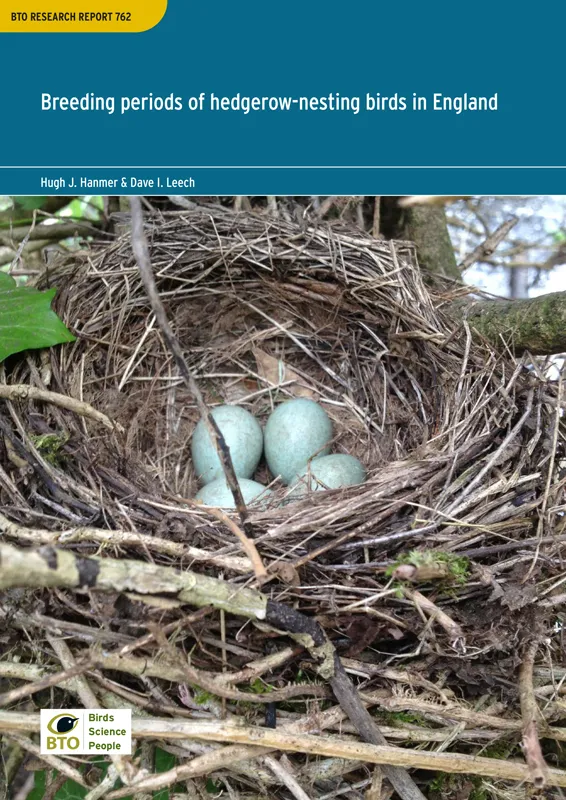
Birds of Conservation Concern Wales 4: the population status of birds in Wales
Author:
Published: 2022
The latest review of the conservation status of birds in Wales. The report assessed all 220 bird species which regularly occur in Wales. There are now 60 species of bird on the Red List, with 91 on the Amber List and just 69 - less than a third of the total number of species - on the Green List. The latest review of the conservation status of birds in Wales comes 20 years after the first, when the Red List was less than half the length it is today. The report assessed all 220 bird species which regularly occur in Wales. There are now 60 species of bird on the Red List in Wales, with 91 on the Amber List and 69 on the Green List. The Birds of Conservation Concern in Wales report assesses the status of each species against a set of objective criteria. Data sources include the BTO/JNCC/RSPB Breeding Bird Survey and the BTO/RSPB/JNCC Wetland Bird Survey, as well as Bird Atlases and other BTO-led monitoring schemes and citizen science initiatives. These are used to quantify the changing status of the species’ Welsh population. The UK, European and global conservation status of the species is also considered, placing the Welsh population into a wider context. The Red ListSwift, Greenfinch and Rook – familiar breeding species in steep decline across the UK – are among the new additions to the Welsh Red List, which now also includes Purple Sandpiper, on account of a rapidly shrinking Welsh wintering population, and Leach’s Petrel, an enigmatic seabird in decline across its global range. These species now sit alongside well-known conservation priorities, such as Curlew, Hen Harrier and Turtle Dove as birds at risk of being lost from Wales for good. Uplands and woodlands Many of the species on the Red List are found in upland and farmland habitats. Starling, Tree Sparrow, Yellow Wagtail and Yellowhammer can no longer be found in much of Wales, while iconic species of mountain and moorland, such as Ring Ouzel, Merlin and Black Grouse, remain in serious trouble. Wales is well known for its populations of woodland birds; however, many of these – including Lesser Spotted Woodpecker, Willow Warbler and Spotted Flycatcher – also feature on the Red List. Goldcrest, which has seen its Welsh population shrink alarmingly in recent decades, is another new addition. On the coast The assessment for Birds of Conservation Concern Wales 4 took place before the impacts of avian influenza could be taken into account. Breeding seabird species have been struggling in Wales for many years, however, and most were already of conservation concern before the outbreak of this disease. Kittiwake, Puffin, Black-headed Gull, and Common, Arctic and Sandwich Tern remain on the Red List. Wales holds internationally significant numbers of breeding seabirds, making the decline of these colonies a global concern. The Amber ListDeclines in Wheatear, Garden Warbler and House Martin - all migrants which breed in Europe and winter in sub-Saharan Africa - mean these species have moved from the Green List to the Amber List. Many other ‘Afro-Palearctic' migrant species are also in decline, but the potential reasons for this, such as habitat loss and reduced availability of invertebrate prey, are not well understood. Closer to home, the declines in the Welsh Chaffinch population, linked to the disease trichomonosis, have seen the species Amber-listed. A number of other species have been placed on the Amber List because of the wider importance of their Welsh populations, which in each case make up more than half the UK total. Wales is home to more than three-quarters of the UK’s Choughs, for example, so recent declines are cause for concern. The nation’s breeding populations of Manx Shearwater, Pied Flycatcher, Goshawk and Hawfinch also account for more than half the UK total, as does its wintering population of Spotted Redshank. It’s not all bad news, though: some species now on the Amber List have moved up from the Red List, indicating some positive change in their population trends. These include Common Sandpiper, Great Black-backed Gull, Bullfinch, Goldcrest and Pied Flycatcher. The Green ListWhile the report contains much cause for alarm, several conservation success stories shine through. Red Kite was almost lost as a British bird during the first half of the 20th century, when only a handful of pairs remained in remote Welsh valleys. Since then, a sustained conservation effort has brought the species back from the brink. Wales is now home to more than 2,500 pairs of Red Kite and the species has now been moved to the Green List, reflecting this incredible change in fortunes. Song Thrush, Reed Bunting, Long-tailed Tit, Redwing and Kingfisher are among the other species to have gone Green, providing much-needed hope that things can go up as well as down.
06.12.22
Reports Birds of Conservation Concern

Habitat-use influences severe disease-mediated population declines in two of the most common garden bird species in Great Britain
Author:
Published: 2022
Infectious disease has been linked to population declines across multiple taxa, including birds, and it is important that we understand how anthropogenic factors, such as urbanisation and the provision of supplementary food at garden feeding stations, may influence its occurrence and impact.
06.09.22
Papers
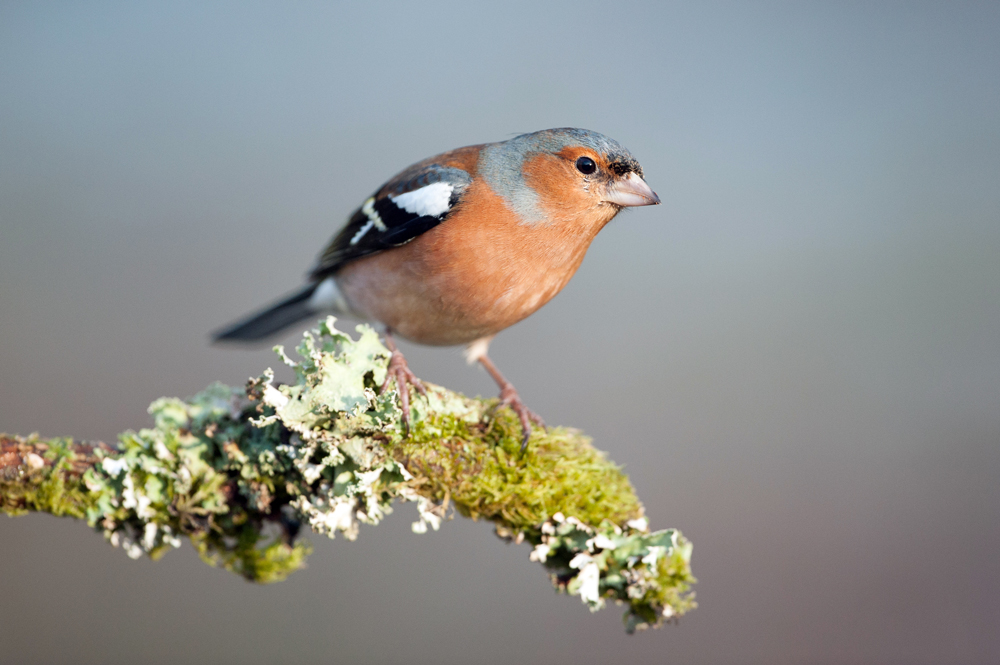
The status of our bird populations: the fifth Birds of Conservation Concern in the United Kingdom, Channel Islands and Isle of Man and second IUCN Red List assessment of extinction risk for Great Britain
Author:
Published: 2021
Commonly referred to as the UK Red List for birds, this is the fifth review of the status of birds in the UK, Channel Islands and Isle of Man, published in December 2021 as Birds of Conservation Concern 5 (BOCC5). This updates the last assessment in 2015. Using standardised criteria, experts from a range of bird NGOs, including BTO, assessed 245 species with breeding, passage or wintering populations in the UK and assigned each to the Red, Amber or Green Lists of conservation concern. The same group of experts undertook a parallel exercise to assess the extinction risk of all bird species for Great Britain (the geographical area at which all other taxa are assessed) using the criteria and protocols established globally by the International Union for the Conservation of Nature (IUCN). This resulted in the assessment of 235 regularly occurring species (breeding or wintering or both), the total number assessed differing slightly from BOCC5 due to different rules on the inclusion of scarce breeders and colonisation patterns. The results of this second IUCN assessment (IUCN2) are provided in the same paper as BOCC5. Increasingly at risk This update shows that the UK’s bird species are increasingly at risk, with the Red List growing from 67 to 70. Eleven species were Red-listed for the first time, six due to worsening declines in breeding populations (Greenfinch, Swift, House Martin, Ptarmigan, Purple Sandpiper and Montagu’s Harrier), four due to worsening declines in non-breeding wintering populations (Bewick’s Swan, Goldeneye, Smew and Dunlin) and one (Leach’s Storm-petrel) because it is assessed according to IUCN criteria as Globally Vulnerable, and due to evidence of severe declines since 2000 based on new surveys on St Kilda, which holds more than 90% of the UK’s populations. The evidence for the changes in the other species come from the UK’s key monitoring schemes such as BTO/JNCC/RSPB Breeding Bird Survey (BBS) for terrestrial birds, the BTO/RSPB/JNCC Wetland Bird Survey (WeBS) for wintering populations and the Rare Breeding Bird Panel (RBBP) for scarce breeding species such as Purple Sandpiper. The IUCN assessment resulted in 108 (46%) of regularly occurring species being assessed as threatened with extinction in Great Britain, meaning that their population status was classed as Critically Endangered, Endangered, or Vulnerable, as opposed to Near Threatened or of Least Concern. Of those 108 species, 21 were considered Critically Endangered, 41 Endangered and 46 Vulnerable. There is considerable overlap between the lists but unlike the Red List in BOCC5, IUCN2 highlights the vulnerability of some stable but small and hence vulnerable populations as well as declines in species over much shorter recent time periods, as seen for Chaffinch and Swallow.
01.12.21
Reports Birds of Conservation Concern

Health hazards to wild birds and risk factors associated with anthropogenic food provisioning
Author:
Published: 2018
Work on emerging infectious diseases and garden birds in the UK has been supported by citizen science projects, most notably Garden BirdWatch, Garden Wildlife Health and the Garden Bird Health Initiative – the latter now superseded by Garden Wildlife Health. Through these schemes, researchers have been able to carry out national surveillance of emerging diseases, including finch trichomonosis, Paridae pox and passerine salmonellosis. This paper, part of a special issue of Philosophical Transactions focusing on wildlife disease issues, reviews the work that has been carried out on these diseases over the past 25 years. It also takes a look at the occurrence of mycotoxin contamination of food residues in bird feeders, which also pose a risk to the health of wild birds. A citizen science approach provides a cost-effective means to undertake large-scale and year-round disease surveillance (Garden Wildlife Health), delivered in parallel to the monitoring of wildlife populations (Garden BirdWatch). By combining large-scale surveillance and targeted post-mortem examinations we can differentiate between the multiple diseases that result in non-specific clinical signs (e.g. lethargy and a fluffed-up appearance). The sample archive collected through post-mortem examination also enables future identification of other disease agents, including those – such as environmental pollutants – associated with non-infectious disease. Avian trichomonosis, caused by the protozoan parasite Trichomonas gallinae, has long been known to affect pigeons, doves and birds of prey. Its emergence in finches in 2005 led to a major population decline in Greenfinch and Chaffinch, reported in an earlier paper. While multiple strains of Trichomonas gallinae are known to infect pigeons and doves in the UK, a single clonal strain is responsible for the epidemic seen in finches. Quite why Greenfinch is so susceptible to the disease is unclear. It is likely that the disease spilled over into finches following the increase in use of garden feeding stations by Woodpigeon, a recent change that follows an increase in wider countryside populations. Avian poxvirus has been documented in a number of garden bird species and is most often seen in House Sparrow, Starling, Woodpigeon and Dunnock. Its emergence in UK tits saw a more severe form of the disease, resulting in pronounced skin lesions, some of which were likely to have hampered the individual’s ability to feed and to avoid predators. Sequence analysis of the poxvirus strains affecting garden birds revealed that a single clade is responsible for the disease seen in UK tits. This form has been known in Scandinavia since the 1950s, with incidents seen elsewhere in mainland Europe since 2005. Because UK tits are relatively sedentary in their habits, and because of the geographical pattern of disease spread seen, it is likely that the disease reached the UK via a biting insect – such as a mosquito, crossing the English Channel in a warm plume of air. Salmonellosis has been reported in wild birds since at least the 1950s, with the bacterium responsible known to be capable of persisting in the environment for many months. Greenfinch and House Sparrow are the two species in which the disease is most often seen. Passerine salmonellosis incidents have a clear seasonality, peaking in January. Interestingly, the prevalence of the disease in UK passerines has dropped sharply over recent years. This may reflect increased immunity to the particular form (DT56v) that had been seen here; or it may be that transmission is density-dependent, with the sharp decline in Greenfinch populations resulting in much lower rates of transmission. Mycotoxins, which include the aflatoxins and ochratoxin, are secondary metabolites produced by certain fungi of the genera Aspergillus and Penicillium. Exposure to the aflatoxins and ochratoxin can exert a range of adverse effects in birds, and the fungi involved and their toxins are known to occur on foodstuffs, including peanuts. Food residues from bird feeders were screened for the toxins as part of the current study, with detectable aflatoxin residues found in all seven samples, two of which greatly exceeded the maximum permitted limits set for such residues in peanuts destined for livestock feed, which includes wild bird food. It therefore seems likely that garden birds may be exposed to these toxins at levels associated with toxic effects in captive birds. This review underlines the great deal of new information that has been generated through these citizen science projects. It also highlights future research needs, particularly around the identification of risk factors, and that we need to understand the balance of risks and opportunities that garden bird feeding provides.
12.03.18
Papers
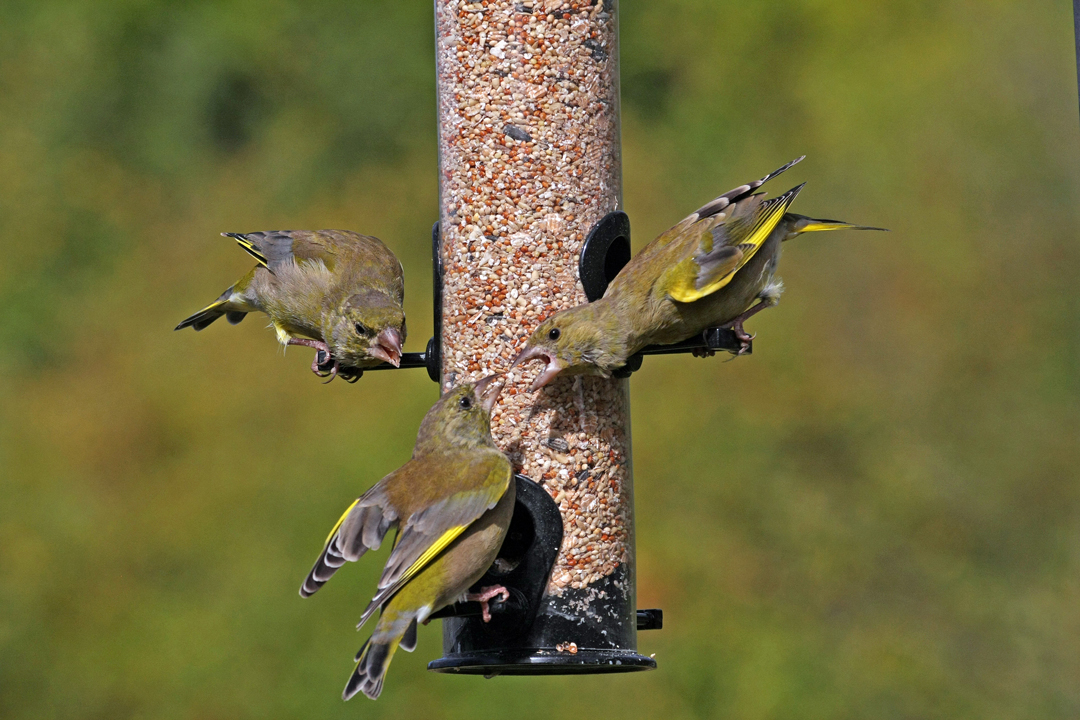
The risk of extinction for birds in Great Britain
Author:
Published: 2017
The UK has lost seven species of breeding birds in the last 200 years. Conservation efforts to prevent this from happening to other species, both in the UK and around the world, are guided by species’ priorities lists, which are often informed by data on range, population size and the degree of decline or increase in numbers. These are the sorts of data that BTO collects through its core surveys. For most taxonomic groups the priority list is provided by the International Union for Conservation of Nature (IUCN) – the IUCN Red List comprises roughly 12,000 species worldwide and their conservation status. However, for birds in the UK, most policy makers refer to the Birds of Conservation Concern (BoCC) list, updated every six years (most recently in 2015). A new study funded by the RSPB and Natural England in cooperation with BTO, WWT, JNCC, and Game & Wildlife Trust has carried out the first IUCN assessment for birds in Great Britain. The study applied the IUCN criteria to existing bird population data obtained from datasets like the BTO/JNCC/RSPB Breeding Bird Survey (BBS). The criteria take into account various factors, most notably any reduction in the size (both in abundance and range) of populations, loss of habitats key to the species, small or vulnerable population sizes, and extinction risk. Alongside this, the criteria look to see if there is a “rescue” effect – such as immigration from neighbouring populations that might boost the population’s numbers, reducing the risk of extinction. The species are then categorised into one of the threat levels below. The results of the new study show that a concerning 43% of regularly occurring species in Great Britain are classed as Threatened, with another 10% classified as Near Threatened. Twenty-three breeding or non-breeding populations of birds were classed as Critically Endangered, including Fieldfare and Golden Oriole (both possibly extinct as breeders), Whimbrel, Turtle Dove, Arctic Skua and Kittiwake, as well as non-breeding populations of Bewick’s Swan, White-fronted Goose and Smew., Over the past 200 years, seven species have gone extinct as breeders in Britain, including Serin, Temminck’s Stint and Wryneck in the past 25 years. The total percentage of threatened birds in Great Britain (43%) is high compared to that seen elsewhere in Europe (13%). Reasons for this are not entirely clear, although it may be that Britain’s island status has something to do with this, as there are fewer neighbouring “rescue” populations. Although the results from the IUCN assessment and BoCC assessment largely overlap, the IUCN assessment raises the level of concern for species such as Red-Breasted Merganser, Great Crested Grebe, Moorhen, Red-Billed Chough (all classed as Vulnerable), and Greenfinch (Endangered). These species might thus warrant closer monitoring in the near future. In contrast, the BoCC assessment identifies a number of species of concern whose declines have been more gradual but over long time periods (e.g. Skylark and House Sparrow). The authors emphasise that this assessment is not a replacement of the BoCC report, but rather that the two reports complement each other. With this new wealth of knowledge, there will hopefully be even more support for those species that need it most.
01.09.17
Papers
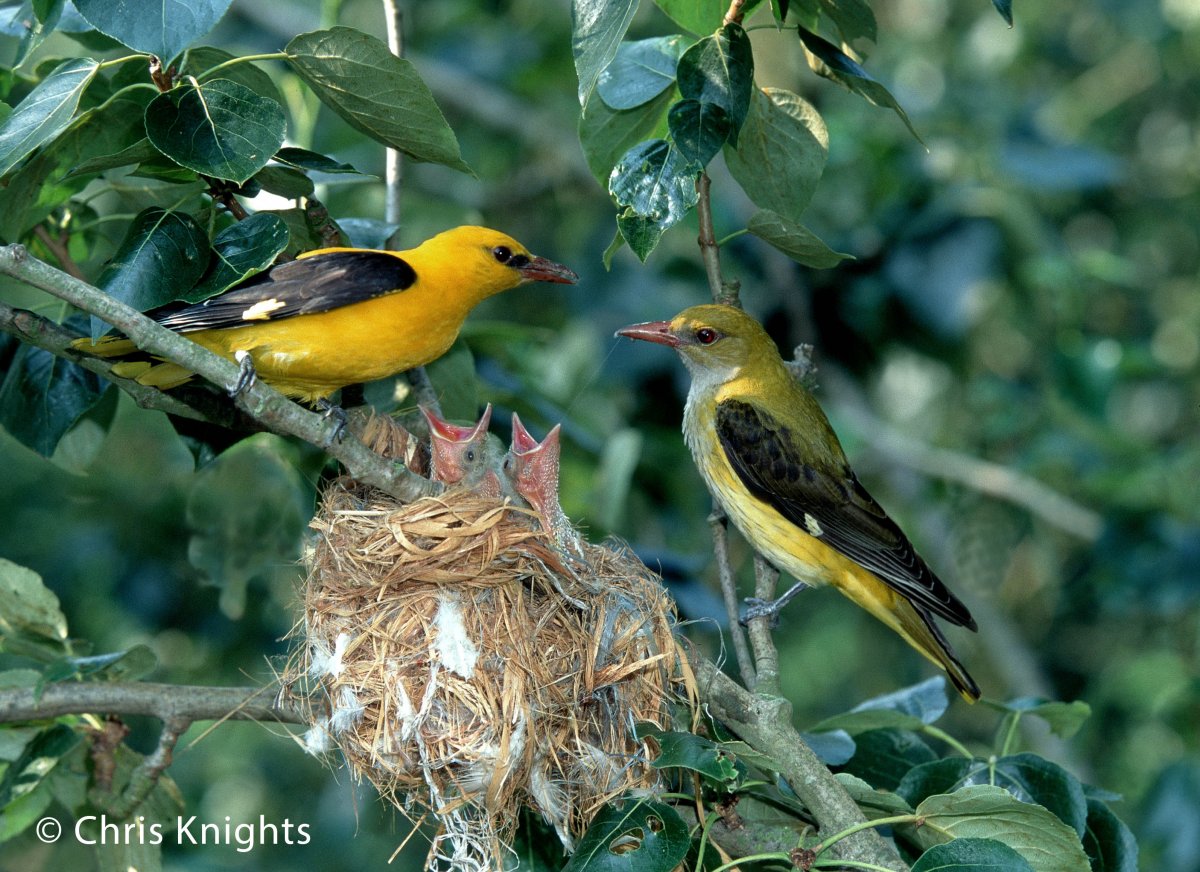
More Evidence
More evidence from Conservation Evidence.com
Partners
Citing BirdFacts
If you wish to cite particular content in this page (e.g. a specific value) it is best to use the original sources as linked in the page. For a more general citation of the whole page please use: BTO (20XX) BirdFacts Species: profiles of birds occurring in the United Kingdom. BTO, Thetford (www.bto.org/birdfacts, accessed on xx/xx/xxxx).

